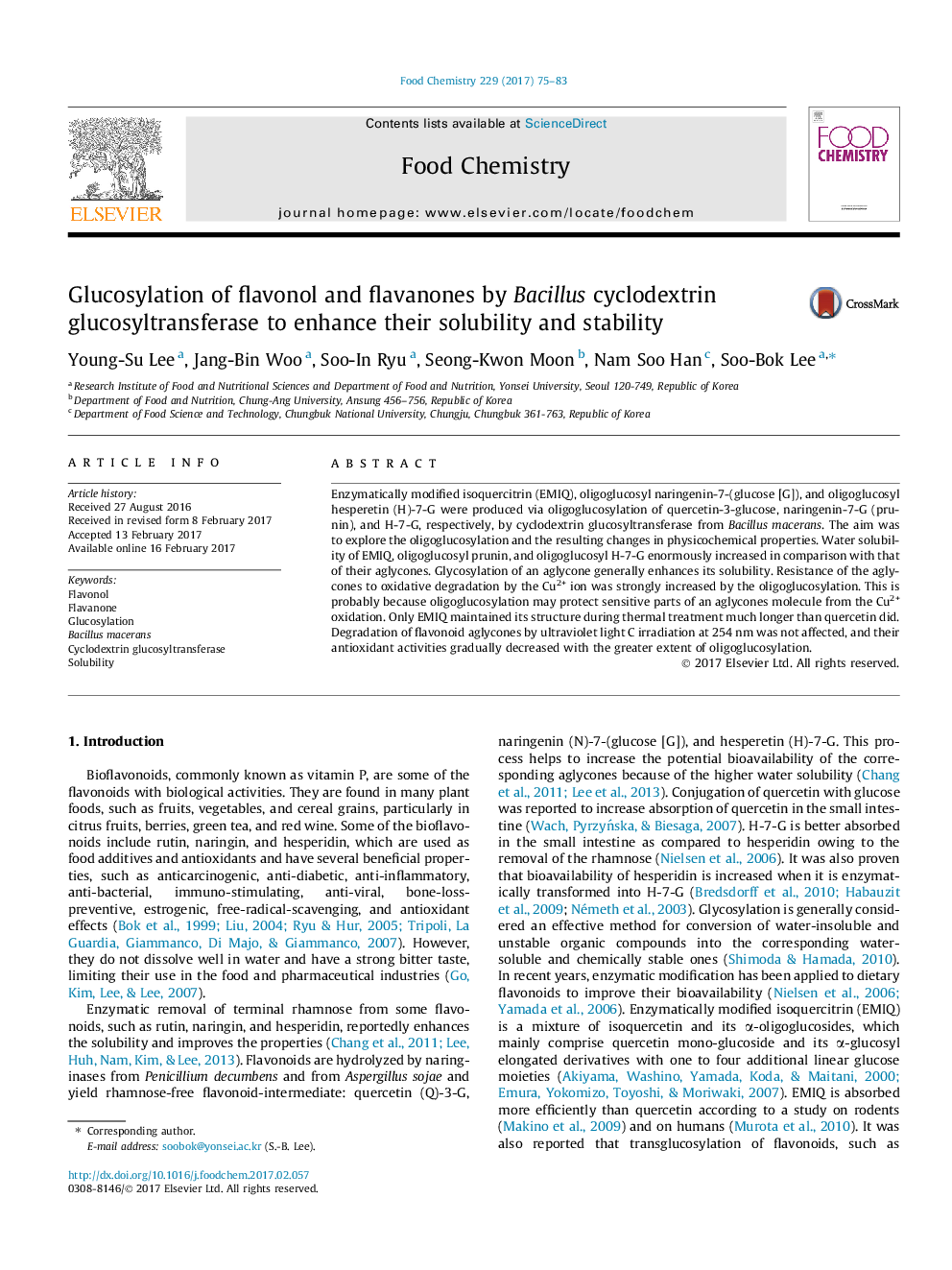| Article ID | Journal | Published Year | Pages | File Type |
|---|---|---|---|---|
| 5133613 | Food Chemistry | 2017 | 9 Pages |
â¢The oligoglucosylation of Q-3-G, prunin, and H-7-G were possible by Bacillus CGTase.â¢The oligoglucosylation greatly enhanced the solubility.â¢The oligoglucosylation increased the resistance to oxidation by the Cu2+.
Enzymatically modified isoquercitrin (EMIQ), oligoglucosyl naringenin-7-(glucose [G]), and oligoglucosyl hesperetin (H)-7-G were produced via oligoglucosylation of quercetin-3-glucose, naringenin-7-G (prunin), and H-7-G, respectively, by cyclodextrin glucosyltransferase from Bacillus macerans. The aim was to explore the oligoglucosylation and the resulting changes in physicochemical properties. Water solubility of EMIQ, oligoglucosyl prunin, and oligoglucosyl H-7-G enormously increased in comparison with that of their aglycones. Glycosylation of an aglycone generally enhances its solubility. Resistance of the aglycones to oxidative degradation by the Cu2+ ion was strongly increased by the oligoglucosylation. This is probably because oligoglucosylation may protect sensitive parts of an aglycones molecule from the Cu2+ oxidation. Only EMIQ maintained its structure during thermal treatment much longer than quercetin did. Degradation of flavonoid aglycones by ultraviolet light C irradiation at 254Â nm was not affected, and their antioxidant activities gradually decreased with the greater extent of oligoglucosylation.
